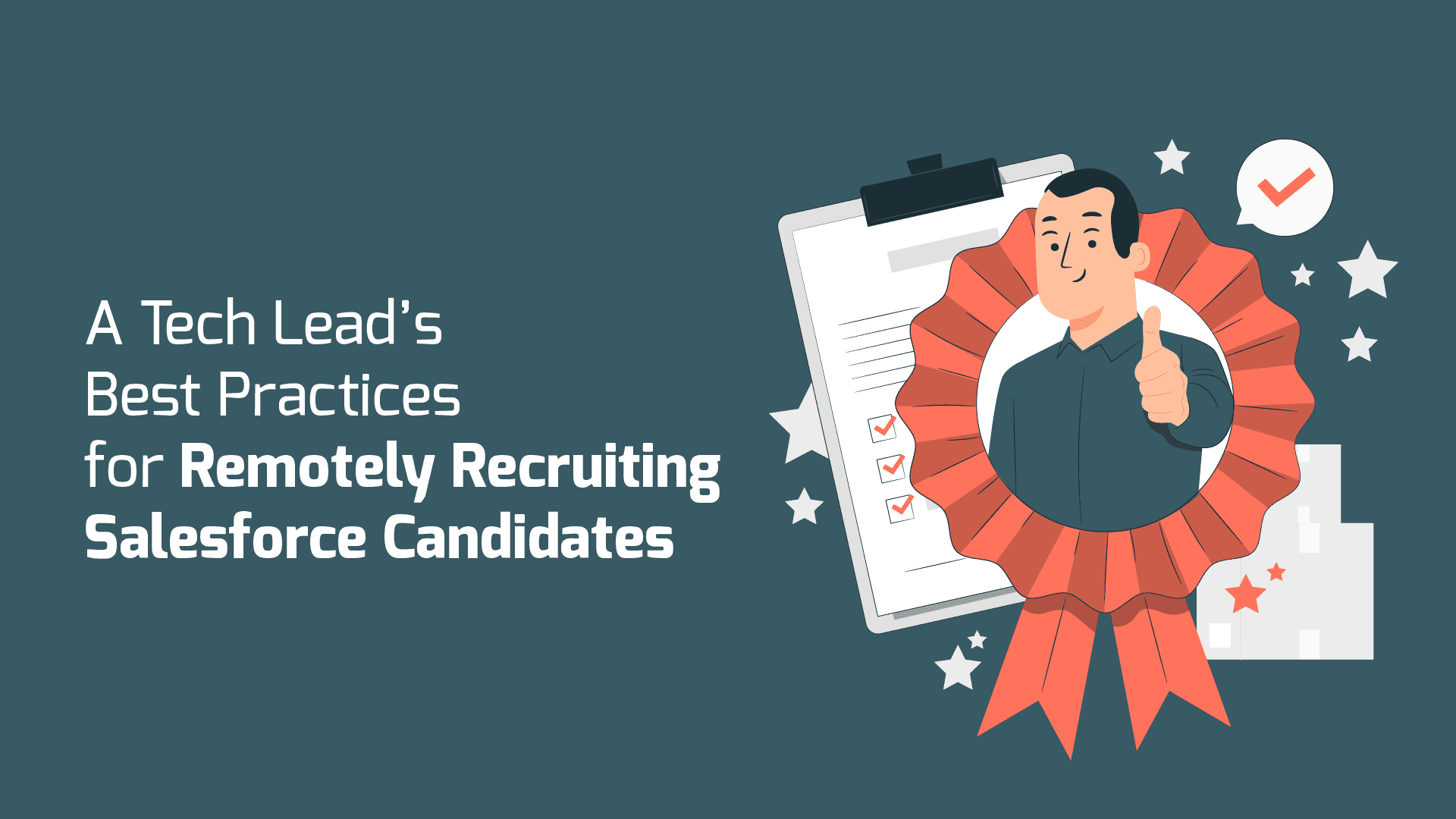For IT staffing firm, recruiting the right Salesforce candidates can be a challenging task as it involves multiple rounds of assessments and interviews, which may stretch further even after you have shortlisted a promising applicant. As this is a roadblock many recruiters are facing at present, especially in the face of remote hiring, I wanted to share some best practices to make this process easier.
As an IT Technical Lead at Peterson Technology Partners, I have worked as a recruiter for over six years and can relate to the challenges recruiters face every day to find that one ideal candidate.
The best practices I have listed are based on the requirement to fill a Salesforce position in one of the leading financial services conglomerates in the mainland United States. Here’s how my team goes about this process:
Topics Covered:
- Candidate Screening
- Internal Interviews
- Client-Side Review
- Final Selection
ROUND 1: CANDIDATE SCREENING
1. Job Description:
To put the recruitment process in motion, we prepare a detailed job description (JD) which is posted to multiple social channels. The JD includes the following sections.
- Company details
- Profile details
- Roles & Responsibilities
- Required qualifications
- Desired social traits
2. Shortlisting:
Based on the blind hiring practices we follow to avoid bias; our recruiter audits our existing talent pool as well as the new applications and reaches out to about 100 candidates based on their:
- Qualifications
- Job experience
- Achievements
3. Screening:
From this list, I may have 40 applications forwarded to me for initial screening. Once I get a hold of the resumes, I manually evaluated every single resume for:
- Technical prowess
- Tools known
- Diversity
- Project management skills
RELATED: 6 Steps to Develop a Foolproof Recruitment Policy
ROUND 2: INTERNAL INTERVIEWS
1. Telephonic Interviews:
I schedule the first round of telephonic interviews via email and speak to each and every candidate for 15-20 minutes to get a gist of whether they would actually fit the role. Some things to keep in mind here are:
- Understand that the candidate may already be employed somewhere, so make sure the interview slots are convenient for them.
- Keep it short and to the point.
- Don’t forget to take down notes—they could come in handy in the next round.
2. Video Interviews:
The profiles that qualify during the telephone round are then pushed to the video round. This next round is more complicated than the previous round as connectivity issues and technical discrepancies come into play. Here are some tips to keep in mind:
- Give clear instructions (in writing) to the candidate about how to join the video interview well in advance.
- Do a test run 10 mins before the interview to rule out technical issues—you could do this with or without the candidate. As you both may be working from home, be mindful that you may face some network issues or background disturbance.
- Watch out for fake candidates—pay attention to their mouth to see if their lip movement and voice are in sync. Take extra care in case they are using earphones to make sure no one is feeding the answers to them. Don’t hesitate to make them screen share if you get the feeling that they are hiding something.
- Try to help them out wherever possible. They may be nervous, so put them at ease.
- Keep the interview questions standard for all candidates.
- Ask a mixture of technical and behavioral questions.
RELATED: What Areas Should Leaders Focus on When it Comes to Hiring?
ROUND 3: CLIENT-SIDE REVIEW
1. Client Questionnaire:
Out of the 40 candidates interviewed, 12 may pass the rigorous video interview, after which they have to complete a technical and behavioral questionnaire set by the client. A few of these interviews will be conducted by our CEO, Nick Shah to test:
- Adequacy and accuracy
- Attention to detail
- Diligence
- Commitment
2. Client Interview:
Next, 10 out of the 12 recommended candidates will likely be interviewed by the client and audited for the following areas:
- Company knowledge
- Brand awareness
- Subject matter expertise
- Technical skills
- Problem-solving skills
- Soft skills
FINAL SELECTION
Finally, 2 of the candidates may be offered the role.
I hope this checklist helps re-evaluate and enhance your recruitment process. This flow can be adapted for any role or domain with ease. Understand that remote recruitment has its pros and cons. On the one side, you can now reach out to the best talent out there without having to worry about location or time zones. On the other, the chances of coming across fake candidates or those who may not stick around for long is high as you don’t get to meet them in person.
Having the right recruitment policy and best practices in place can help you pull off remote hiring with amazing results. All it takes is some trial and error, extensive research, reflective interview questions, and a good internet connection.
Good luck finding your ideal candidate!
Mehak Chopra
IT Technical Lead at Peterson Technology Partners
Aurora, Illinois, United States
PTP helps you in hiring the top IT talent.
Let us connect you with the strongest candidates to help meet your goals; say hello@ptechpartners.com or contact us here.





 Work with us
Work with us